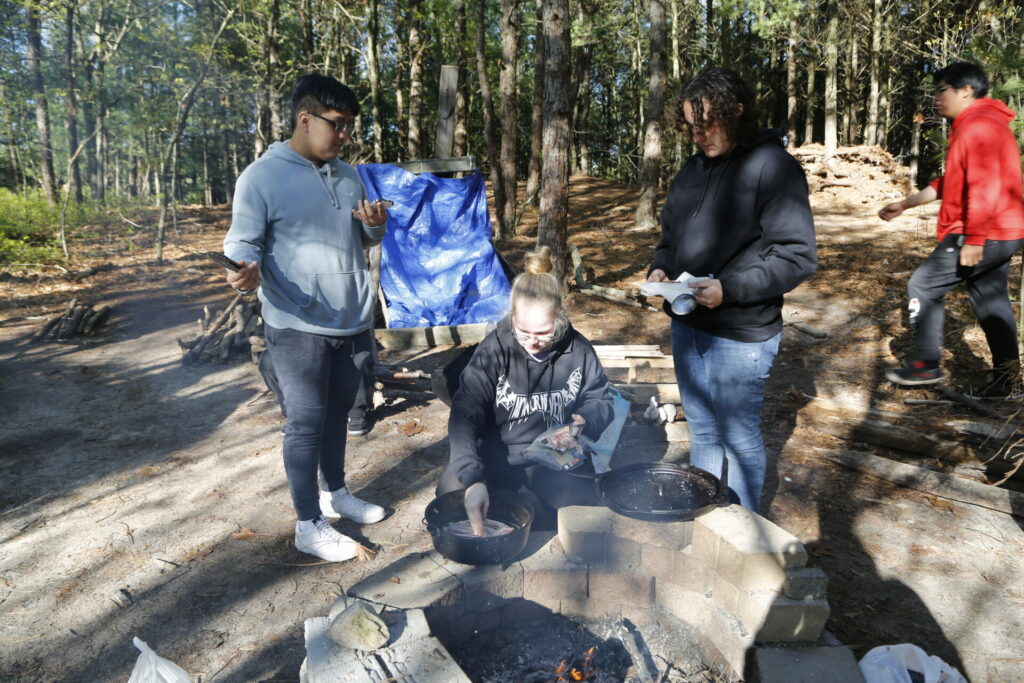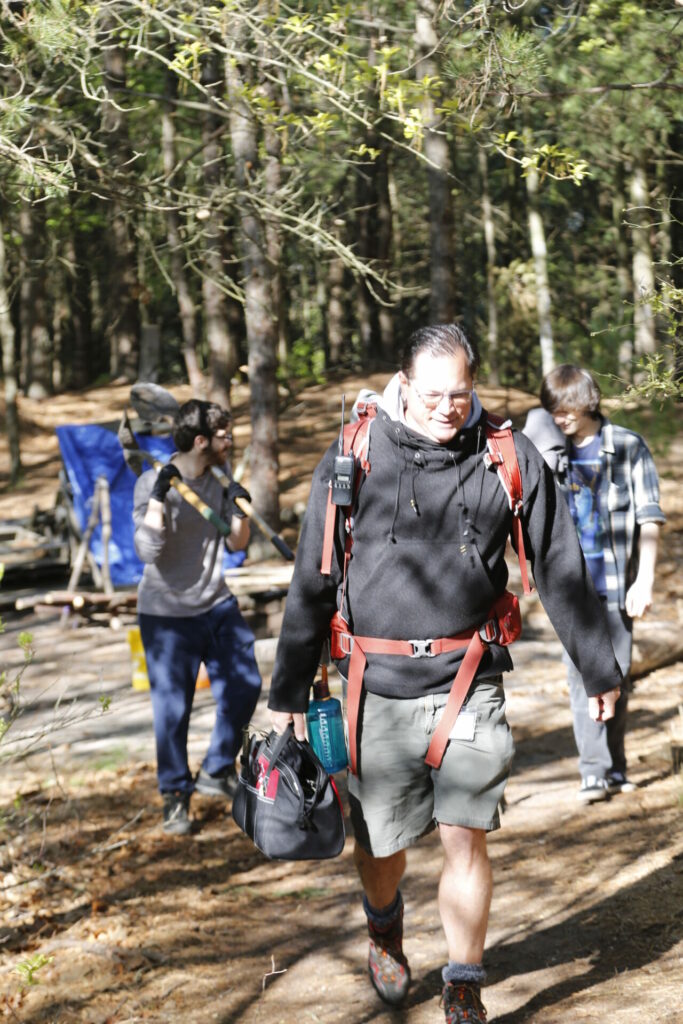By Kathryn Coulibaly
It took almost 10 years for Mark Haug to get district support for an unusual class idea. After working with the Boy Scouts for years, Haug was familiar with the wilderness survival merit badge and the skills it tested.
“When I read up on the badge, I thought that these skills were common knowledge,” Haug recalls. “These were things that you picked up just from being a child. But the kids I was teaching it to reacted like it was a new discovery. I was surprised that students didn’t know these basic skills, and I felt that it was important for them to learn them.”
Three years ago, Haug, a health and physical education teacher at Central Regional High School in Bayville, finally got permission to proceed with the program. He began teaching Wilderness I, and the immediate response from the students was positive.
“This class is a mix of biology and history,” Haug says. “It’s really a collection of everything. We talk about the history of New Jersey, Native American history and the history of scouting. We go on a hike and stop to look at birds and talk about their calls.”
The class was so popular that Haug is now only teaching Wilderness I and II classes. He has six sections with about 150 students in total. Class sizes are kept to about 20 to 25 students.
“The kids who shine in my class are not always the kids who shine in other academic areas,” Haug says. “Oftentimes it’s the kid who’s never really gotten much attention who is the one who gets the fire started. There are a lot of kids who are shining in this program who never shine in physical education classes.”
Haug created the class to be very hands-on. Not only is it the best way for many students to learn, but these are valuable skills that need to be practiced.
“When I first introduce some of these ideas, such as a three-mile hike, I get resistance from some of the students who have never done anything like that before,” Haug says. “But we are exploring our own environment. We are looking at things they’ve never seen or paid attention to before. They’re finding out things about themselves and where we live. I’ve had students come back and tell me that now they’re organizing even longer hikes with their friends and even camping.”



Haug developed the Wilderness Survival program to teach students important (and fun!) outdoor skills.
Try, fail, try again
One of the projects students work on in Wilderness II is building a shelter. Working in teams, they design the shelter, gather materials and work together to construct it. They try and fail and try again. Some of the designs are based on things they have studied, and some are original concepts.
“Students are gathering pine needles, digging to create new floors, finding tree limbs to create a roof,” Haug says. “They literally have to get their hands dirty to be successful, and that’s not something they’ve encountered in school before.”
One of the students’ favorite parts of wilderness survival classes are the Friday cookouts.
“Every Friday, they bring in food and cook it over a fire that they’ve made themselves,” Haug says. “One student really excelled at this. He’s like the Gordon Ramsey of the school now and other students bring in things just to see what he can do with it.”
Everyone has something to offer
Haug recommends that other districts implement wilderness survival courses. He’s seen firsthand the positive impact it has on a wide group of students.
“We’ve had well over 250 students go through the class. It’s popular because everyone can participate. Everyone has something to offer,” Haug says.
“We’ve had a blind student, students with Down syndrome, autism or other special needs all thrive in this class,” Haug says. “Students understand that in the wilderness, you have to work together and that everyone can contribute.”
Haug has seen benefits to the students’ mental health, as well.
“Connecting with nature is a huge tool in our mental health toolbox,” Haug says. “We’re showing students that not only are we all connected to each other as people, but we’re connected to the natural world, as well. We can derive great strength from working together in nature.”
Kathryn Coulibaly is the associate editor of the NJEA Review and provides content and support to njea.org. She can be reached at kcoulibaly@njea.org.
Topics in Wilderness I and II
- Animal identification
- Ax use and safety
- Bushcraft
- Careers in the outdoors and nature
- Compass use
- Disaster preparation
- Emergency food/Meals ready to eat (MREs)
- Fire building
- Fishing
- Forestry
- Hiking
- Invasive species
- Knife safety
- Knots
- Map reading
- Self-reliance
- Shelter building
- Teamwork
- Trapping
- Tree identification
- Water purification
